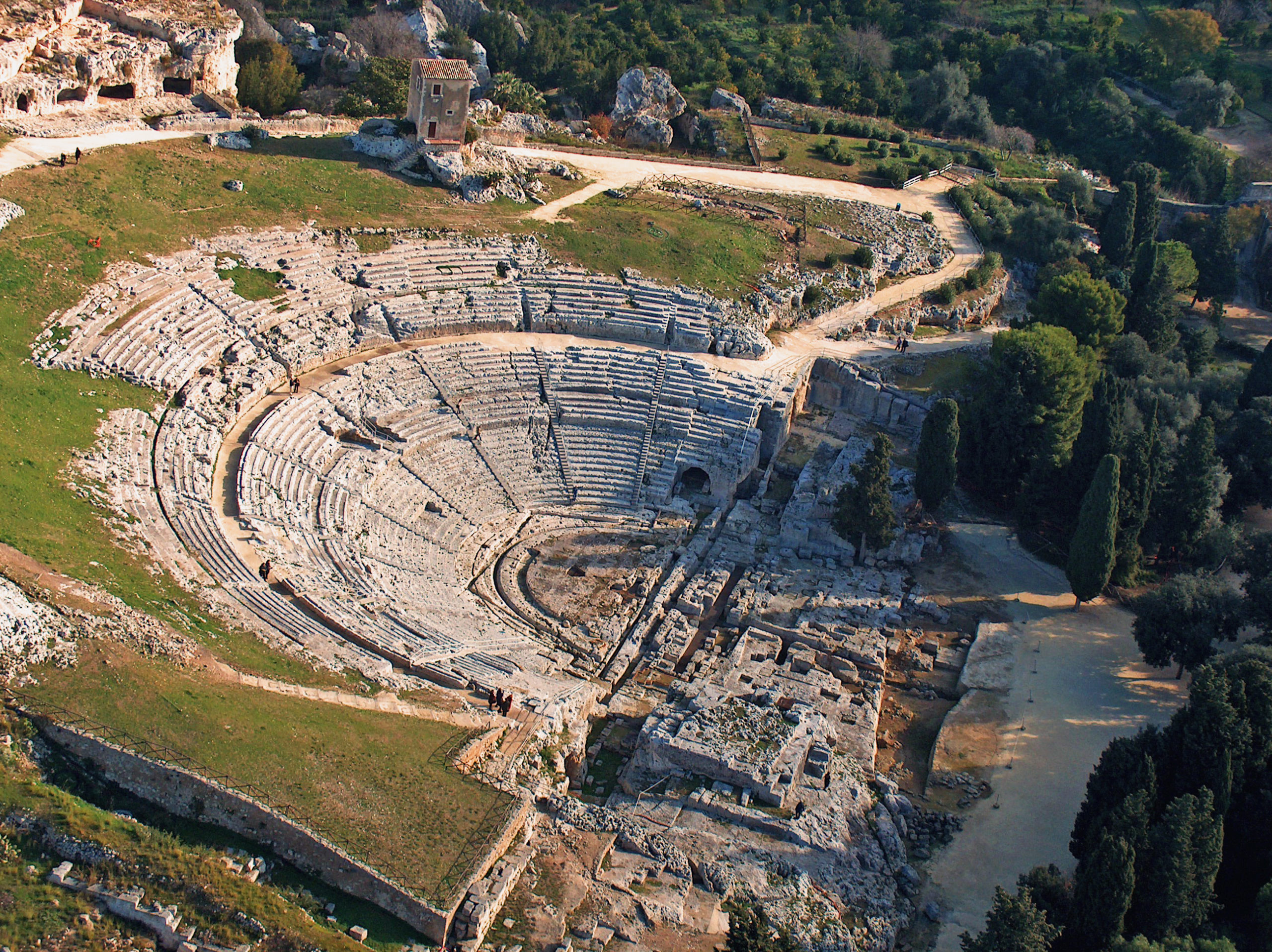Paolo Orsi Regional Archaeological Museum
The Paolo Orsi Regional Archaeological Museum, first opened in 1988, is one of the most important archaeological museums in Europe. It is located inside the Park of Villa Landolina where, among secular plants and remains of Roman and Greek times, lies a small non-Catholic cemetery, built by the family Landolina, which includes twelve burials including that of the German poet August von Platen.
The Museum is housed in a modern structure designed by the architect Franco Minissi and named after the archaeologist Paolo Orsi an internationally renowned scholar and director of the Museum for more than thirty years. The structure, which occupies a total space of 12,000 square meters, is composed of three sectors arranged around a central body; it is spread over three floors, one of which is a basement, used as an auditorium, and two upper floors used for exhibition spaces.
In 2015, the Paolo Orsi Regional Archaeological Museum became the first Sicilian museum and the first archaeological museum in southern Italy to allow the visit of the rooms through Google Street View. Also in 2015, the museum obtained the record among all archaeological museums in Sicily in terms of number of visitors. Following this great success, free audio guides have been added and the rooms have been enhanced with multimedia elements to provide more in-depth explanations on the various sections.
The museum illustrates the prehistory and history of almost all the archaeological sites of eastern and central Sicily up to the classical age and until the Hellenistic and Roman age as far as the city of Syracuse is concerned.
The collections originate from a small archiepiscopal collection from the end of the 18th century, to which were added other pieces from donations by local collectors. In 1811, this collection formed the first nucleus of the Municipal Museum, which became the National Museum in 1878. Most of the collections currently on display, however, originate from archaeological excavations conducted by the Superintendence of Syracuse
The organisation of the Museum has been designed in such a way as to allow a topographical and chronological view of the finds. The exhibition on the ground floor is divided into three sectors, A, B and C, destined for prehistory and the Greek era in the city of Syracuse and in the colonies.

Sector A exhibits rocks, faunas and fossils from the Quaternary Era, including two dwarf elephants, and a rich series of artifacts ranging from the Palaeolithic and Neolithic to the Historical.

Sector B is reserved for Sicily’s Greek colonies and houses vases, bas-reliefs, architectural elements in terracotta and stone that were part of the temples, as well as important statues such as that of Lentini’s Kouros dating back to the fifth century BC.
Sector C is dedicated to the sub-colonies of Syracuse, Eloro, Akrai, Casmene and Camarina, as well as the excavations carried out in the territories of Gela and Agrigento. Of particular interest are the series of kits, the votive offerings and the distinctive Attic ceramics with black and red figures.
Sector D, located on the first floor, was inaugurated and opened to the public in 2006. It houses finds from the Hellenistic-Roman period including the “Venus Anadiomene” also known as “Venus Landolina” from the name of the Syracuse archaeologist Saverio Landolina who found it in 1804. It is a Roman copy of a Greek original from the first half of the first century BC.

In 2014, sector F dedicated to Christian and Byzantine archaeology was added, where numerous finds from the catacomb of San Giovanni in Syracuse were exhibited. The Rotonda di Adelfia, which contains the homonymous sarcophagus, ranks as of central importance. The Sarcophagus of Adelfia occupies the central exhibition space which, thanks to the use of large photographic panels, reconstructs the place inside the catacombs where the sarcophagus was found in 1872 Francesco Saverio Cavallari.
The N sector was inaugurated in 2010 in the basement. Here you can find the historical exhibition of the old and famous medal-box previously exhibited in the old museum, with precious Syracuse coins, jewels and other coins from the surrounding areas from different periods.
OPENING HOURS AND PRICES
Location: Viale Teocrito, 66 – Siracusa
Contacts.: +39 0931 489511
Free entry on the first Sunday of each month.
Museum entrance ticket: Adults € 8,00 – Reduced € 5,00 (from 13 to 18 years old) – Free entry up to age 12.
Cumulative ticket Archaeological park + a museum of your choice between Museo Paolo Orsi or Galleria Palazzo Bellomo – Ticket price: € 13.50 – Reduced € 7.00 (under 18 years) – Free entry up to age 12.
Opening hours of the ticket office: from 9.00 to 18.00
OR
OPENING HOURS OF THE ENTRANCE TO THE MUSEUM: from 9,00 to 19,00
CLOSING DAYS: MONDAY
PUBLIC HOLIDAYS: from 9.00 to 13.00


